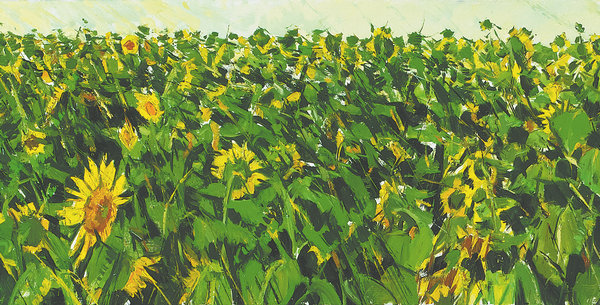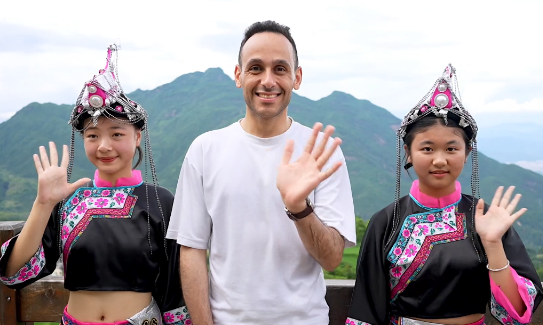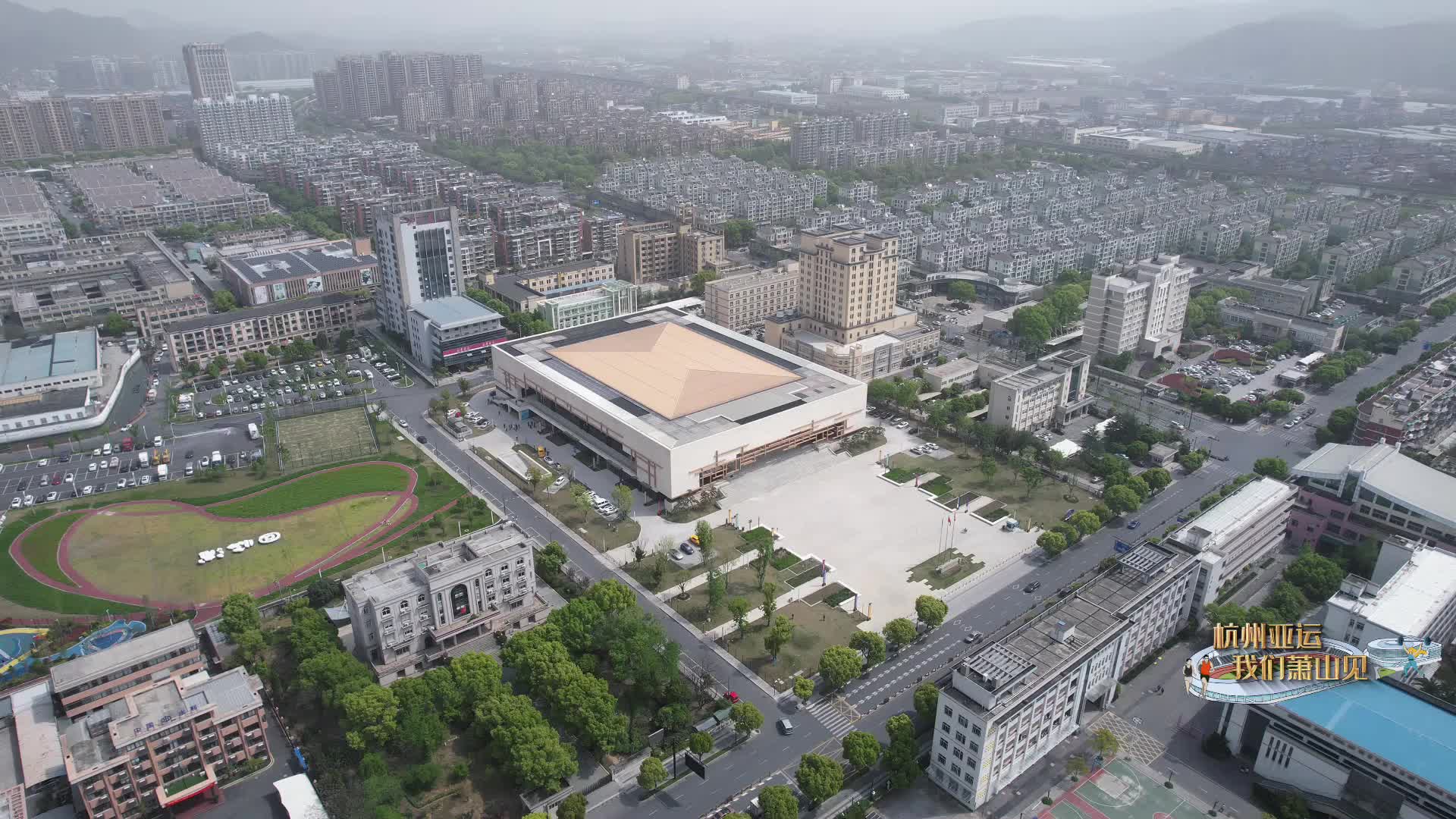Outstanding in his field

Sunflowers, in various states, are a key theme in his paintings. CHINA DAILY
In his painted works, sunflowers rarely appear individually and in isolation; instead, he has invariably restored sunflowers to the environment in which the plants grow, usually vast stretches of fields.
In particular, through painting, sculpting and writing about sunflowers, he says he hopes "to use them to represent our generation", as Xu believes the collective portrait of the plant embodies the life, as well as the spirituality, of his generation.
Born in Fuzhou, capital city of Fujian province, in 1955, Xu graduated from the China Academy of Art with a major in oil painting in 1982. In 1988, he went to study at the University of Fine Arts of Hamburg in Germany. Four years later, Xu returned to teach at his alma mater.
The defining moment of Xu's career as an artist, as he recalls, came on a day in August 2003.
On a cultural trip to Turkiye with a group of Chinese artists, he happened to see swaths of sunflowers near the Sea of Marmara.
"I was suddenly confronted with an expanse of withering sunflowers standing in the setting sun," he says. "And they struck me as if they were made of steel and copper, blended with the earth."
"I thought I saw a legion of aged troops, or indeed ourselves," Xu says.
As they drove on for another 100 kilometers, the ancient ruins of Troy, immortalized in Homer's Iliad, appeared before Xu.
The contrast of the two sights — a flower that blooms and falls each year on the one hand, and the 4,000-year-old repository of human civilization — seemingly ignited Xu's passion for sunflowers, and helped him identify a lifelong painting subject.
Ever since, sunflowers have captured his imagination: To Xu, they are not just plants, they represent his spiritual underpinnings.
As another well-known artist Qiu Zhijie once quipped, "Once Xu Jiang stepped into that sunflower garden, he has never looked back."
Another part of the exhibition showcases Xu's paintings of Shanghai's Bund, created over 20 years ago, presenting a historical panorama of the metropolis at the time.
In these paintings, Xu has depicted "the ruins and monuments of time" for the viewer, says Gao Shiming, Xu's successor, the current president of the China Academy of Art.
"The Bund in his works is no ordinary urban landscape; rather, it is a witness to the vicissitudes of modernity," Gao says.
"Holding an exhibition at the Bund by the Huangpu River is quite a memorable experience," Xu said in a speech at the opening ceremony of the exhibition.
"The Bund of many years ago appeared in my paintings and my gaze frequently. Standing here, I feel like I'm in a scene from history or a garden of nostalgia," he says.
Contact the writer at mazhenhuan@chinadaily.com.cn
-
Foreign teacher, Hangzhou students capture picturesque countryside
August 9, 2023
-
Hangzhou Asian Games launch 50-day-to-go campaign
August 4, 2023
-
Hangzhou achieves 6.9% GDP growth in H1 2023
July 27, 2023



